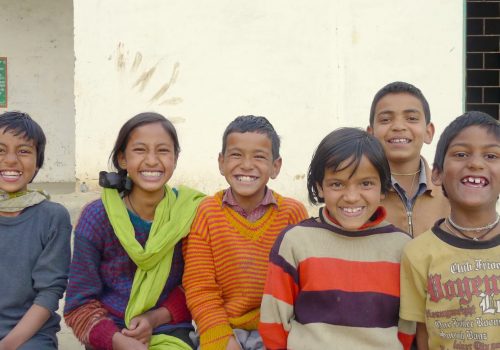

This year, World Day Against Child Labour (commemorated on 12th June every year,) focuses on action taken for the 2021 International Year for the Elimination of Child Labour, with the theme being: Act Now, End Child Labour!
In July 2019, the UN General Assembly unanimously adopted a resolution declaring 2021 as the International Year for the Elimination of Child Labour. This an ideal opportunity to reinvigorate efforts to achieve SDG Target 8.7 to end all forms of child labour by 2025.
On this World Day Against Child Labour, Kailash Satyarthi Children’s Foundation is calling upon all stakeholders to ensure Fair Share For Children in laws, policies, resources and budgets.
Celebrating the Legacy
ILO Convention 182 on Worst Forms of Child Labour, which stands as a landmark international law in the fights against child labour, is the result of steady and sustained international advocacy by Nobel Peace Laureate Kailash Satyarthi who initiated the Global March Against Child Labour in 1998 that brought together more than 7 million people to call for this convention and the end to child labour. The physical march traversed more than 80,000 kms, covering Asia, Africa, Latin America, North America and Europe, uniting people across 103 countries with the slogan “Down down, Child Labour. We want education!” Mr. Satyarthi mobilised more than 2000 institutional partners who contributed to the success of the march.


Mr. Satyarthi has time and again emphasised the need for accountability and efficient implementation of Convention 182, by strengthening national administrative systems, allocating optimum budgets to national laws and policies prioritising children and their wellbeing. His tireless blend of activism, dialogue and deep compassion led the ILO to declare June 12th as the ‘World Day Against Child Labour.’
This World Day Against Child Labour we are calling on all stakeholders to choose a specific action that contributes to ending child labour and which can be achieved by December 2021 and beyond
For Governments
For Businesses
Adhere from employing children below the minimum age of employment and promote decent work for youth. Carry out due diligence in your organisation to see the existence of child labour and remedy it.
For Civil Society
Join the call of Nobel Peace Laureate Kailash Satyarthi to end child labour.
Child Labour in India
The term “child labour” is often defined as work that deprives children of their childhood, their potential and their dignity, and that is harmful to physical and mental development. It refers to work that:
- is mentally, physically, socially or morally dangerous and harmful to children;
- interferes with their schooling by depriving them of it or affecting their attendance and concentration
Many children in child labour work in slavery, separated from their families and are exposed to serious hazards and illnesses.
Child labour is both a cause and consequence of poverty. Household poverty pushes children into the labour market, perpetuating poverty across generations, slowing economic growth and social development.
It prevents children from gaining an education and skills that will lead to an adulthood of decent work opportunities. Inequality, lack of education, consumerism, discriminatory practices as well as traditions and cultural expectation are among factors that play a role in the occurrence of child labour.
According to data from Census 2011, the number of child labourers in India is 10.1 million of which 5.6 million are boys and 4.5 million are girls. The latest global estimates indicate that 160 million children – 63 million girls and 97 million boys – were in child labour globally at the beginning of 2020, accounting for almost 1 in 10 of all children worldwide
Across India child labourers can be found in the agriculture, industry and service sectors such as in brick kilns, carpet weaving, garment making, domestic service, food eateries, sugarcane farms, fisheries and mining. Children are also at risk of various other forms of exploitation including sexual exploitation and production of child pornography.
Due to long working hours and hazardous work, children in child labour face a number of problems. The conditions in which children work are mostly unhygienic and toxic for their health. Stress, depression, tuberculosis, night blindness and back pain are some of the most common health problems faced by such children. Child labourers can suffer from long-term health problems such as due to malnutrition, exposure to chemicals, abuse, injuries, exhaustion, and psychological harm. These children are often subjected to sexual abuse.
The National Sample Survey Organisation’s 2017-18 household survey put the number of out-of-school children in India (6-17 years) at 3.22 crore. In January 2020, for the first time, the school dropout rate in India was less than 3%, but Covid-19 will undo that. Globally, more girls are likely to be affected at pre-primary and upper secondary levels, while both boys and girls are at a greater risk of not returning to universities.
Videos
20 Years of Global March Against Child Labour
Nobel Peace Laureate Kailash Satyarthi’s Message on 20 Years of Global March Against Child Labour
Global March Against Child Labour which lead to the adoption and ratification of ILO Convention 182 on Worst Forms of Child Labour
Resources
To download Child Labour Handbook
click here
To download Child Labour Projection Report
click here
To download Extent of Child Labour and Prosecution of cases under clrpa in India click here
